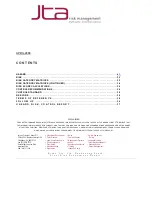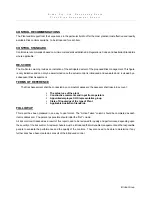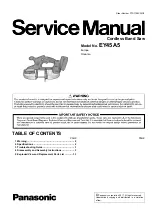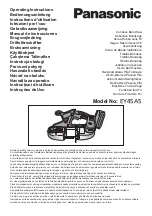
Brobo Group
Rapid teeth wear
Broken blade
Blade
with
incorrect
and/or
excessive fine tooth pitch
Workpiece not clamped firmly in
place
Excessive vibrations
Head speed too slow or too high
Cutting pressure to high
Insufficient coolant
Non-homogenous material being cut
Head speed to high
Teeth in contact with material before
commencing the cut
Insufficient coolant
Excessive vibrations
As excessive pressure is exerted of
the incorrect teeth profile, replace the
blade with correct tooth pitch
dimensions and profile.
Any movement of the workpiece
during the cutting process can cause
broken teeth; check the vice clamps,
clamping
jaws
and
clamping
pressure is satisfactory.
Specimen vibrates in the vice; check
that the vice clamps are position
correctly and the clamping pressure
are adequate.
The blade/slide runs over the
material without cutting it; increase or
decrease head speed respectively.
Reduce cutting pressure
Check the coolant level and clean
piping and nozzles
The material present may not be
homogenous either on the surface,
such as oxides or sand present, or in
sections, such as under-cooled
inclusions. The variances in grain
development cause the premature
wearing of teeth and consequently,
break as the result. Homogenise or
clean these materials.
Reduce head speed
Always check the position of the
blade before starting a initiating a
new cut or job
Check the coolant level and clean
piping and nozzles
Specimen vibrates in the vice; check
that the vice clamps are position
correctly and the clamping pressures
are adequate















































